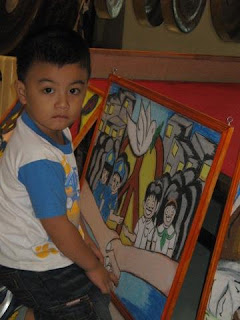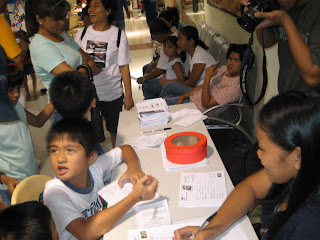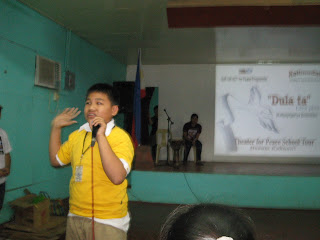Peace Totem
Peace Art for Kids
Peace Drama: Dula Ta
Itanum Kalinaw 2 2007
PEACE PILLARS: ART FOR PEACEBUILDING
The decorative pillar or totem pole's main purpose is to tell a story with symbols, typically animals and people. The story usually details the history and wealth of the family that commissioned it.
Traditionally, totem poles have been used to commemorate special events. During the totem creation process, the head carver often lived with the host family, sometimes for several months. A head carver managed two or more junior carvers during the process. The head carver was held in high esteem, and the head of the host family was responsible for making sure that he was comfortable, happy and entertained during his stay.
The meanings of the designs on totem poles or pillars are as varied as the cultures that make them. Totem poles may recount familiar legends, clan lineages, or notable events. Some poles celebrate cultural beliefs, but others are mostly artistic presentations. Poles illustrate stories that commemorate historic persons, represent shamanic powers. House front poles were meant to show the success of the families.
Vertical order of images is widely believed to be a significant representation of importance. This idea is so pervasive that it has entered into common parlance with the phrase "low man on the totem pole." This phrase is indicative of the most common belief of ordering importance, that the higher figures on the pole are more important or prestigious.
Using these backgrounds, the Peace Pillars will be used as medium to present peace building and the importance of peace thru the creative process of painting on its surfaces rather than the traditional carving figures. The peace pillars will showcase the symbols of peace and the aspirations of the youth for achieving peace in the region.
The art workshop aims to commemorate peace as the main SUBJECT which will present the very importance of the pillar as proclaimer of special events. The art making itself will give significance to the art makers-participants as their interaction will exert peace building among them and their outputs, their own advocacy for peace.


















































































